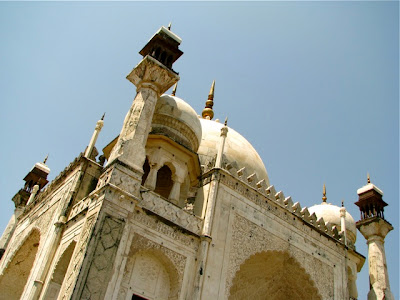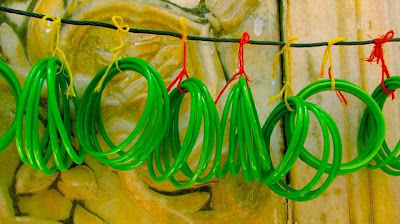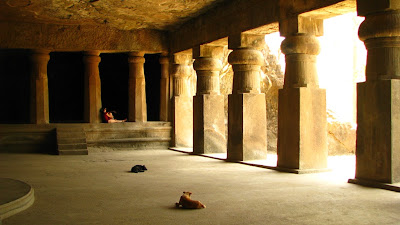
Bibi ka Maqbara
Granted the Bibi ka Maqbara was built by Aurangzeb's son Azam Khan for his mother, rather than as any great monument of love for a spouse, I still find it deliciously ironic that the building attempted to copy the Taj, a monument which Aurangzeb reportedly found distasteful for the amount of money spent (or wasted, as he would have had it) on its construction.
No building, of course, can even compare to the Taj.
The Maqbara is but a poor attempt - too narrow, the dome looks rather bulbous as a result, the four outlying pillars are far to blocky and broad. The dome is of marble and marble also decorates the very bottom of the monument, but it's almost as if the makers ran out of funds to overlay the remaining middle in marble (perhaps they did) and painted it a chalk white. It is still an interesting and significant piece of Mughal architecture and would possibly have demanded much greater praise, if it weren't for the parallels it so obviously draws.
Aurangzeb's grave
Aurangzeb's grave on the other hand is hauntingly simple - still, as Aurangzeb had himself willed, open to the skies. Loath to use treasury funds for the tomb, he asked that no more than 8 rupees be spent on his tomb, the money collected from the sale of the caps he stitched and the Quranic verses he calligraphed. The marble grill was added only in early twentieth century, when Lord Curzon, the then Viceroy, visited and was appalled to see the state of the place. It is still difficult to believe that royalty lies here, let alone the Mughal emperor who ruled India for the longest and at its largest.












